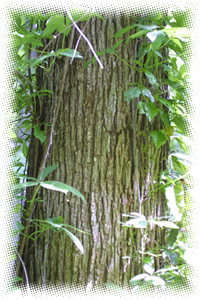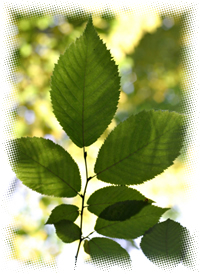Elm, Slippery Ulmus fulva

- Common Names
- Elm, Slippery , Red Elm, Moose Elm, Indian Elm
- Botanical Name
- Ulmus fulva
- Family
- Urticaceae
Medicinal Uses & Benefits of Elm, Slippery
![]() How to Use|
Side Effects |
Plant & Garden|
How to Use|
Side Effects |
Plant & Garden|
- Medicinal Uses: * Bladder Infection (UTI)
* Burns
* Cuts & Wounds
* Diarrhea
* Gastritis/ulcer
* Sore Throat
- Properties: * Astringent * Demulcent * Depurative * Diuretic * Emollient * Expectorant
- Parts Used: Inner Bark
- Constituents: mucilage
How to Use: Elm, Slippery
Slippery Elm bark powder is considered one of the best possible herbal poultices for reducing pain and inflammation of wounds, boils and skin ulcers, and burns. The tree's inner bark is rich in mucilage, a spongy, slippery fiber that soothes skin on the outside and coats the mucus membranes that cause irritation in the throat and urinary tract when the herb is taken as a tea or infusion. 1 In Herbal Healing for Women, Rosemary Gladstar explains the source of the myth that slippery elm can be harmful in pregnancy. Native American women used long sticks of slippery elm to induce miscarriage, which gave slippery elm a bad reputation in that regard. It is perfectly safe, and indeed is a used as a medicinal food.
Preparation Methods & Dosage :The chopped bark is suitable for poultices. Use ground bark for tea. The inner bark is preferred. Teas, infusions, poultices. Up to 5 tablespoons (15 grams) of slippery elm bark can be dissolved in a cup (240 ml) of water. Sometimes found encapsulated and as a liquid extract. 1
Elm, Slippery Side Effects: There are no known contraindications or precautions for slippery elm because it is mainly mucilage and various nutrients.
Plant Description

The Slippery Elm is a small tree abundant in various parts of North America. The inner bark has important medicinal value and was official in the US. Pharmacopoeia. The powdered bark is sold in two forms: a coarse powder for use as poultices and a fine powder for making a mucilaginous drinks. It is recommended that ten-year old bark be used. The powder should be grey of fawn-colored. If dark or reddish, good results will not be obtained. 2
Regional Traditions :North America *
History and Traditions & Folklore
 It is a cold and Saturnine plant. The leaves thereof bruised and applied heal green wounds, being bound thereon with its own bark. The leaves or the bark used with vinegar cureth scurf and leprosy very effectually: The decoction of the leaves, bark, or root, being bathed, heals broken bones.
It is a cold and Saturnine plant. The leaves thereof bruised and applied heal green wounds, being bound thereon with its own bark. The leaves or the bark used with vinegar cureth scurf and leprosy very effectually: The decoction of the leaves, bark, or root, being bathed, heals broken bones.
Nicholas Culpeper, 1653











